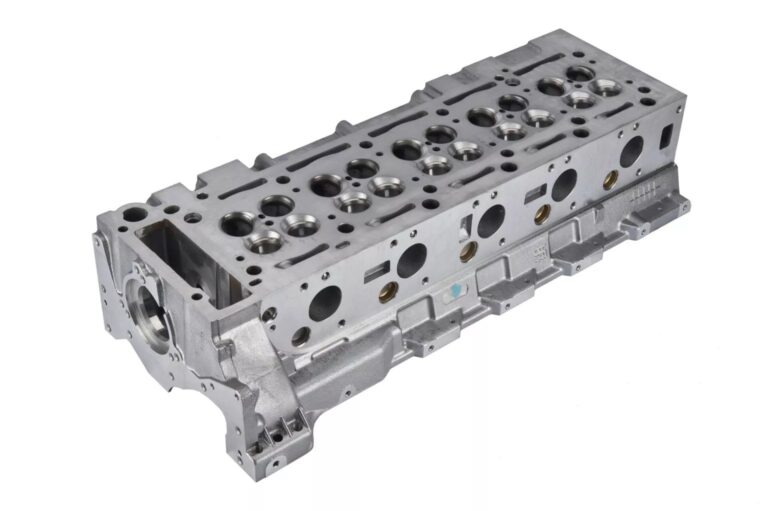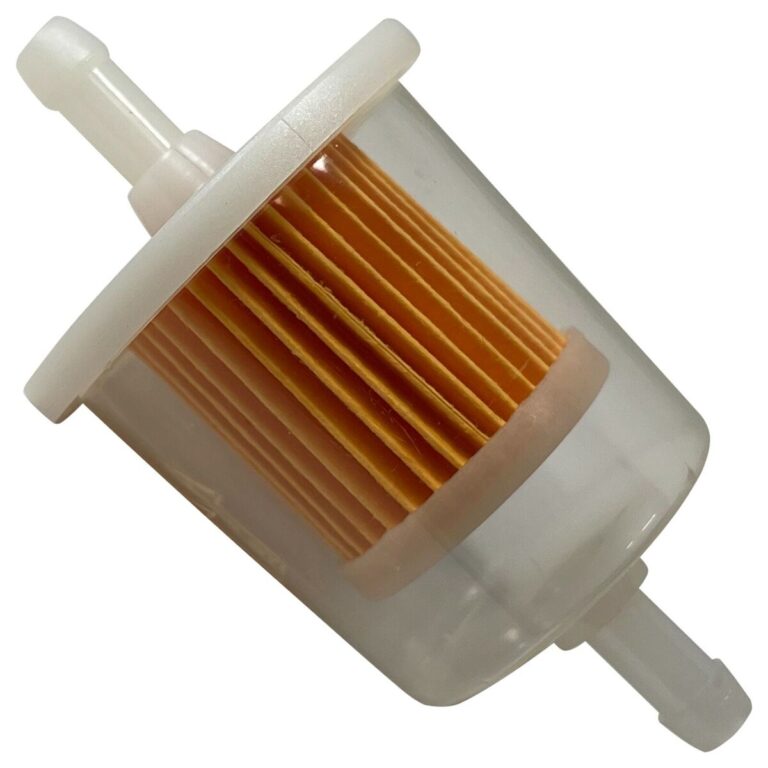The Importance of Camshafts in the Automotive Industry
Camshafts are an essential component of any internal combustion engine, playing a crucial role in the operation of the engine’s valves. Understanding the function and importance of camshafts in the automotive industry is key to appreciating their significance in the overall performance of a vehicle.
What is a Camshaft?
A camshaft is a rotating shaft with specially shaped cams that convert rotary motion into linear motion. It is typically located in the cylinder head of an engine and operates the engine’s intake and exhaust valves. The shape and size of the cams on the camshaft determine the timing and duration of the valve opening and closing, which in turn affects the engine’s performance.
The camshaft is driven by the crankshaft through a timing belt or chain, and it rotates at half the speed of the crankshaft. As the camshaft rotates, the cams push against the valves, causing them to open and close at the precise times required for the engine to function effectively. This process is vital for the engine to intake air and fuel, as well as to expel exhaust gases, in sync with the piston’s movements.
The Function of a Camshaft
The primary function of a camshaft is to control the opening and closing of the engine’s valves at the right times. The timing and duration of the valve events, known as valve timing, are critical factors that affect the engine’s power, efficiency, and emissions. The design of the camshaft, including the lift and duration of the cams, is carefully engineered to optimize the engine’s performance under various operating conditions.
During the intake stroke, the intake valve opens to allow the air-fuel mixture to enter the combustion chamber. The camshaft’s profile determines how far the valve opens (lift) and for how long (duration). The intake valve then closes during the compression and power strokes, followed by the opening of the exhaust valve to expel the burnt gases during the exhaust stroke. The camshaft’s precise control over these valve events is essential for the engine to operate efficiently and generate power.
Camshaft Types
There are several types of camshafts used in automotive engines, each with its own unique characteristics and applications. The most common types include:
- Flat Tappet Camshaft: This type of camshaft has a flat surface for the tappet to ride on. It is a traditional design that has been widely used in older engines.
- Roller Camshaft: Roller camshafts feature roller bearings on the tappets, reducing friction and allowing for more aggressive cam profiles.
- Hydraulic Camshaft: Hydraulic camshafts use hydraulic lifters to automatically adjust valve lash, making them low-maintenance and quiet in operation.
- Performance Camshaft: Designed for high-performance engines, these camshafts have aggressive profiles to maximize power and torque output.
Each type of camshaft has specific advantages and limitations, and the choice of camshaft depends on the engine’s design, intended use, and performance requirements.
The Future of Camshaft Technology
Advancements in automotive technology continue to drive innovation in camshaft design and manufacturing. With the demand for more efficient and environmentally friendly vehicles, camshafts are being developed with improved materials, surface treatments, and manufacturing processes to enhance their performance and durability.
One area of development is the use of variable valve timing (VVT) systems, which allow the camshaft’s timing to be adjusted dynamically based on engine speed, load, and other operating parameters. This technology enables better control over the engine’s breathing, improving power and fuel efficiency while reducing emissions.
Furthermore, the integration of camshaft phasing and lift control systems, such as camless valve trains, is being explored to provide even greater flexibility and precision in valve operation. These advancements aim to optimize the engine’s performance across a wide range of operating conditions, leading to more responsive and efficient powertrains.
The Role of Camshafts in Performance and Racing Engines
In high-performance and racing applications, camshafts play a critical role in maximizing engine power and torque output. The design and selection of camshafts for performance engines are tailored to specific performance goals, such as increased horsepower, improved throttle response, and broader power bands.
Performance Camshaft Design
Performance camshafts are designed with more aggressive profiles compared to stock camshafts, with increased lift and duration to allow for greater airflow into and out of the combustion chamber. These camshafts are engineered to optimize valve events for higher engine speeds and increased power production, often sacrificing low-end torque for top-end performance.
The selection of a performance camshaft involves careful consideration of the engine’s compression ratio, cylinder head flow characteristics, exhaust system design, and intended use. Performance camshafts are available in various profiles, including hydraulic flat tappet, solid flat tappet, hydraulic roller, and solid roller, each offering different levels of performance and adjustability.
Camshaft Timing and Overlap
The timing and overlap of the camshaft’s intake and exhaust events significantly influence the engine’s performance characteristics. Advanced camshaft timing can improve high-end power, while increased valve overlap can enhance scavenging of exhaust gases, improving cylinder filling and low-end torque.
Racing engines often utilize custom-ground camshafts tailored to specific racing disciplines, such as drag racing, road racing, or oval track racing, to optimize performance for the demands of each competition. Camshaft designers and engine builders work closely to develop camshaft profiles that complement the engine’s overall performance package and deliver the desired results on the track.
Camshaft Materials and Construction
In racing applications, camshafts are often subjected to extreme operating conditions, requiring high-strength materials and precise manufacturing techniques to withstand the stresses of high engine speeds and aggressive valve train dynamics. Racing camshafts are commonly constructed from alloy steels or billet materials to ensure durability and reliability under the most demanding conditions.
The use of advanced heat treatment processes, such as case hardening and nitriding, further enhances the wear resistance and fatigue strength of racing camshafts, allowing them to endure the rigors of high-performance racing without compromising their integrity.
Future Trends in Performance Camshaft Technology
The pursuit of greater performance and efficiency in racing engines continues to drive innovation in camshaft technology. Advancements in materials, coatings, and manufacturing processes are expected to yield camshafts that offer higher strength, reduced friction, and improved thermal stability, contributing to higher power levels and reliability in racing applications.
Moreover, the integration of advanced control systems, such as variable valve timing and lift, is likely to become more prevalent in racing engines, enabling precise optimization of valve events for specific racing conditions. These developments aim to push the boundaries of performance and provide racers with the competitive edge they seek on the track.
The Evolution of Camshaft Manufacturing Processes
The manufacturing of camshafts has evolved significantly over the years, driven by advancements in engineering, materials, and production technologies. Modern camshaft manufacturing processes employ state-of-the-art techniques to produce camshafts that meet stringent quality and performance requirements.
Traditional Camshaft Manufacturing
Historically, camshafts were machined from cast iron or forged steel using conventional milling and grinding processes. The production of camshafts involved multiple machining operations, including rough turning, heat treatment, finish grinding, and inspection, to achieve the desired cam profiles and surface finish.
While traditional manufacturing methods have been effective in producing reliable camshafts, they are labor-intensive and time-consuming, limiting the ability to optimize camshaft designs for specific performance objectives and to accommodate complex geometries and material combinations.
Modern Camshaft Manufacturing Techniques
Modern camshaft manufacturing leverages advanced machining technologies, such as CNC machining, precision grinding, and multi-axis milling, to streamline the production of complex camshaft profiles with tight tolerances and superior surface finishes. These technologies enable greater flexibility in camshaft design and allow for the incorporation of features such as variable valve timing and lift control.
Furthermore, the use of advanced materials, such as alloy steels, ductile iron, and lightweight alloys, has expanded the possibilities for camshaft construction, offering improved strength-to-weight ratios and thermal stability. The application of specialized coatings and surface treatments has also enhanced the wear resistance and friction characteristics of camshafts, contributing to longer service life and reduced friction losses.
Quality Control in Camshaft Manufacturing
Quality control is paramount in camshaft manufacturing to ensure that each camshaft meets the specified design requirements and performance standards. Advanced inspection techniques, including coordinate measuring machines (CMM), non-destructive testing, and surface profilometry, are employed to verify the dimensional accuracy, surface integrity, and material properties of camshafts.
Additionally, rigorous testing and validation procedures, such as dynamic testing on engine test stands and endurance testing under simulated operating conditions, are conducted to validate the performance and durability of camshafts before they are approved for production use. These measures are essential to guarantee the reliability and longevity of camshafts in demanding automotive and racing applications.
The Future of Camshaft Manufacturing
The future of camshaft manufacturing is poised for further advancements in automation, digitalization, and additive manufacturing. Industry 4.0 technologies, such as smart factories, digital twins, and predictive maintenance, are expected to revolutionize the production of camshafts by enabling real-time monitoring, adaptive manufacturing processes, and data-driven quality assurance.
Furthermore, the adoption of additive manufacturing, such as 3D printing and laser powder bed fusion, holds the potential to redefine camshaft design and production by enabling the creation of intricate geometries, lightweight structures, and customized features. Additive manufacturing processes offer flexibility in material selection and can reduce lead times for prototyping and low-volume production of specialized camshafts.
Conclusion
Camshafts are integral to the operation of internal combustion engines, serving as the mechanical link between the crankshaft and the engine’s valves. The design, function, and manufacturing of camshafts have evolved significantly to meet the demands of modern automotive and racing applications, driving innovation in materials, technologies, and performance optimization.
As the automotive industry continues to embrace electrification, hybridization, and advanced propulsion systems, the role of camshafts in internal combustion engines remains essential for maximizing power, efficiency, and emissions performance. The ongoing development of camshaft technology and manufacturing processes is poised to deliver even greater performance and reliability in the engines of the future.
,refusal: null








Leave a Comment